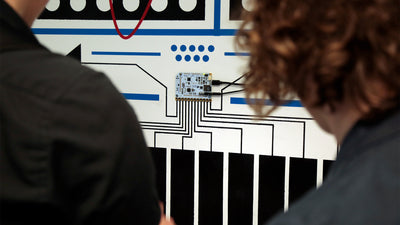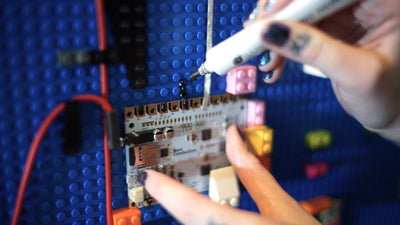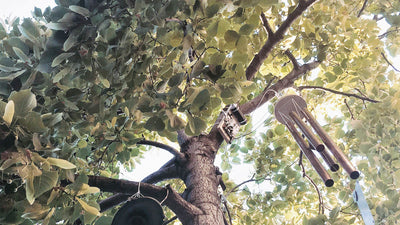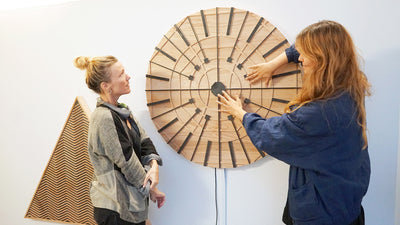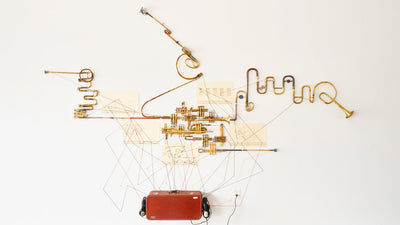Soft Cuddly Tentacle - Using Conductive Thread To Create A Cuddly Creature

Last week we spoke to Tom Fox the creative director of the London based sound art community group Hackoustic. Having been inspired by the unique instruments coming out of the project, we caught up with another Hackoustic collaborator Helen Leigh. Helen is a creative technologist who specialises in music technologies, craft-based electronics and education. She designs and makes musical instruments, from interactive art installations to mainstream commercial products.
Having a passion for making unusual instruments and noise-making objects, Helen experiments with unconventional conductive material to build her projects. Her most recent creation is a " soft, squishable, pillowy" creature that she designed to wrap around the body, with the aim of creating an object made of conductive fabric that can offer comfort to people feeling anxious or alone "I designed the weight, texture and sound of the creature to be comforting".
At the heart of the project is a Touch Board with a sound sample loaded onto the SD card. This sample is triggered by stroking a sensor in the form of a seam of machine embroidered conductive thread that runs down the middle of the fabric. The board uses capacitive touch to detect strokes, triggering the sample. The body of the creature is made with two tapered pieces of cotton, both around 1.50m long. She tacked flat wadding to the back of both these pieces of fabric, then used conductive thread to sew elastic down the middle of the smaller piece, using a technique called ruching to gather the fabric and make it curl like a tentacle. Next, the two sides were sewn together and stuffed, adding a circular 'lid' and two internal pockets to keep the board and the USB battery pack that powers it snug.
After experimenting with lots of different smart textiles, Helen found that there was no ultimate conductive thread, as she had preferences for certain threads depending on their applications. In this project, she knew she needed something that could be used in a sewing machine, so Madeira HC12 conductive thread was chosen, which could be used in both the top and bottom threads for sewing. As most conductive threads cannot be used with a soldering iron, she had to find another way to connect the seam of thread to the Touch Board.
On the inside of the creature, the thread is stitched to one side of a metal press stud. The other side of the press stud is soldered to a piece of solid core wire, which in turn is soldered to one of the electrodes on the Touch Board. This also means that the sensitive electronics are now easily removable, allowing her to remove the board, battery and stuffing to wash the textile.
Helen uses a wide range of microcontrollers and single-board computers in her work but in this project, she felt the Touch Board made total sense. "This project uses no new code: just the standard settings that the board ships with. All I had to do was find the sample and save it onto the SD card with the right filename. In fact, once I had the physical object, making it purr took less than five minutes".
If you want to make your own project using sewn circuitry, you can browse through the projects and resources from Kobakant, get Sophi Wong’s excellent book on wearables or check out Helen's book for young people (or beginners who like cute things) on craft-based electronics.
Follow Helen on Twitter or on Instagram.
Images and Video: Helen Leigh
We love it when you share your projects! Post your project on Instagram, YouTube, or Twitter, and make sure to tag @bareconductive or use #bareconductive. You can also send your videos and photos to info@bareconductive.com so we can post them on our site for the world to see.


